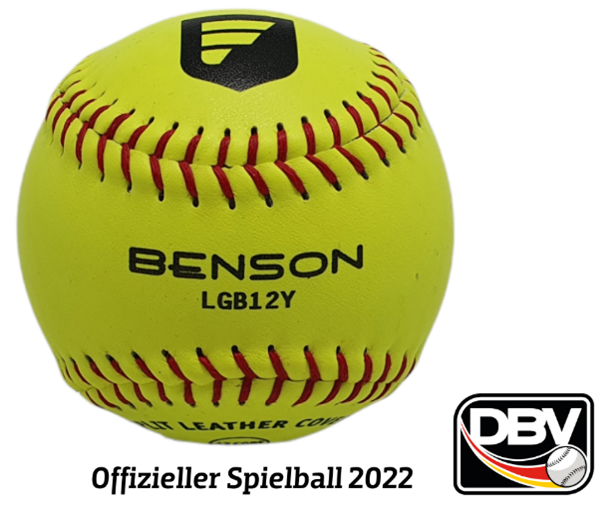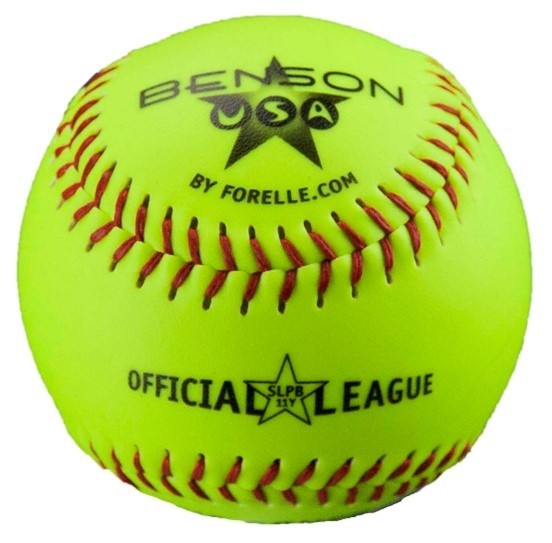This buying guide will help you understand the anatomy of the softball en the differences between softballs and their size.
To the untrained eye, every softball looks the same. Just a yellow ball waiting to be thrown and get hit. But there’s more to it, think of measurements, colors and calculations that divides one softball from another. The construction of the softball has made some massive improvements since the beginning of the sport. And also the design and features of the ball have made progress, which impacts the performance on the field even better.
Looks and materials
A softball looks a lot like a baseball, it has a few differences on it. Not talking about the size of course. Softballs also have a core and a cover, just like a baseball. Are hold together with stitching, again, just like a baseball. The first difference we have here is that a softball does not have the yarn between the core and cover. This difference is hearable when hitting the softball.
Core
The core of a softball is, most of the time, made out of polyurethane or kapok. Kapok is a mixture of cork and rubber. The circumference of the core is what separates the softballs. This circumference varies by standards that have been set by the specific league. But all leagues and levels of play use the same materials for the softballs.
Cover
A softball cover can be made out of two materials, either natural leather or synthetic leather. Something that a baseball does not have is a change in color, a softball can have a cover in the color white or in optic yellow. When playing competitive, you’ll only find the optic yellow softballs. The white softballs are used in recreational leagues and for some slow pitch leagues.
Seams and stitching
Just like a baseball, the cotton or linen string can be raised. The raised seam gives a better grip on the ball with pitching and throwing. The seam can also be flat, making it harder to control. The seam of the softball can have some typical colors. It can either be red, black, blue or the same color as the leather.
Stamps
When looking at a softball is almost the same as looking at the school desks with all the scrabbles. On the softball you can find a lot of different stamps, measurements and designs. All of these different things are equally important when buying softballs. Of course, you’ll find the logo and name of the brand you’re buying the ball from. But the next thing you’ll find on the softball is the league logo. This is the first thing to check when buying a softball, since all leagues like the USSSA, ASA or NFHS use different standards for the ball size, compression and COR. COR means Coefficient of Restitution. So when you want to know if the softball you are trying to use is allowed in your league, all you have to do is check the stamps. You will always have to check with the league official, website or your coach to really make sure if you are allowed to use it.
COR and Compression
Let’s dig in a bit deeper in the softballs. These two things, Compression and COR, tell a lot about softballs as they affect the performance big time on the field. The Compression and COR will make a difference about how far the ball will travel when it is hit with a certain amount of power.
Compression
The Compression explains the amount of force that is needed to compress the ball for ¼ Inch. This is measured in pounds.
COR
COR is the measurement of the bounce of the ball. The higher the COR, the more it bounces. This results in softballs that go farther and faster.
Sizing
The size of the softball you’ll have to use will all be determined by the league you are playing in. Normally, the leagues that are playing competitive softball will use a softball between the size of 10”and 12”. Some slow pitch leagues will use softballs up to a size of 16”.
Youth softball
Younger softball players usually use a softball of 11”or 12”. Sometimes it happens that a league uses a 10” ‘soft’ ball. This ball does not have the hard core so it is a bit squeezable. This is better for younger players because they can grip the ball better with their small hands. Another advantage is that they can overcome their fear for the ball.
Slow pitch
Most of the time, a Slow pitch softball league uses a 12” softball. These balls will travel at slower speeds and less distance than a fastpitch softball. The Compression and COR is determined by the league, these numbers are lower than with a fastpitch softball.
Fastpitch
In Fastpitch games, a softball with the size of 11” will be used. A Fastpitch softball will travel at higher speeds and more distance, because the Compression and COR are higher. These numbers, again, will be determined by the league.
Like mentioned above, there are league-specific softball dimensions that can only be used in a certain league. The usual range of softball sizing is 11” – 12”. Different clubs, adult recreational leagues or different organizations might use special softballs with a size from 14” to 16”. Always make sure, before you buy your softballs, to talk to the coach or the league official.
Now that you know everything about softballs and what balls you have to use on the field, it’s time to go out there and throw some balls.


